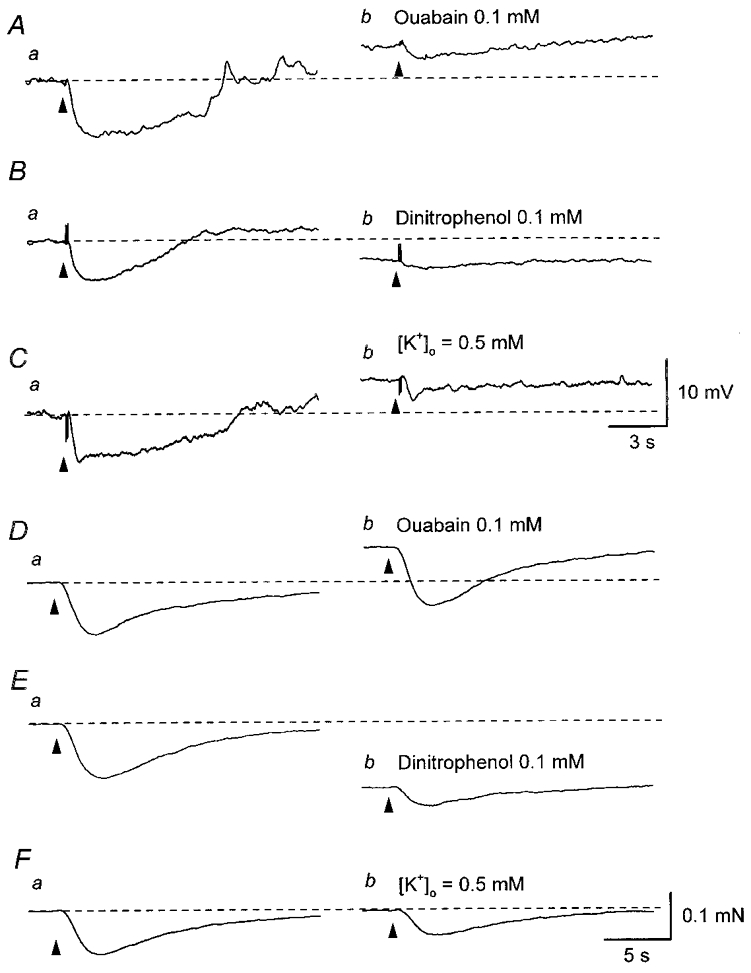Figure 5. Comparison of the effects of ouabain, dinitrophenol and decreasing [K+]o on IJPs and nerve-evoked relaxations recorded from parenchyma of the rat penile bulb.

Three impulses delivered at 20 Hz initiated an IJP in parenchyma (Aa). Ouabain (0.1 mM) depolarised the membrane and reduced the amplitude of the IJP (Ab). In another parenchyma preparation, dinitrophenol (0.1 mM) hyperpolarised the membrane and reduced the amplitude of the IJP initiated by two impulses delivered at 20 Hz (Ba and b). In the other parenchyma preparation, decreasing [K+]o to 0.5 mM depolarised the membrane and reduced the amplitude of IJPs initiated by two impulses delivered at 20 Hz (Ca and b). In a separate series of experiments, five impulses delivered at 20 Hz invariably caused relaxations (Da, Ea and Fa). Ouabain (0.1 mM) caused a contraction but did not reduce the amplitude of the nerve-evoked relaxation (Db). Dinitrophenol (0.1 mM) caused a relaxation and reduced the amplitude of the nerve-evoked relaxation (Eb). Reducing [K+]o to 0.5 mM did not change the basal tension but reduced the amplitude of the nerve-evoked relaxation (Fb). Resting membrane potentials were -38 mV in A, -36 mV in B and -40 mV in C. D–F were recorded from the same preparation. Scale bars in C refer to all traces in A–C. Scale bars in F refer to all traces in D–F.
